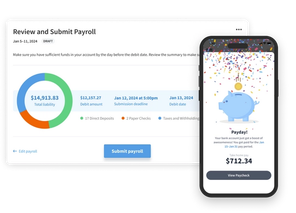
Eddy’s HR Mavericks Encyclopedia
The world's largest free encyclopedia of HR, with 700+ HR articles and podcasts.
Created by Eddy and our HR Mavericks community.
Separation & Offboarding Statistics
The offboarding process is an oft-neglected element of HR. Many companies have effective onboarding procedures for employees but offer little in the way of structured offboarding. But good onboarding can help minimize potential security risks, protect your credibility, and leave the door open for great former employees to return. We’ve gathered some of the most valuable offboarding statistics available to give an overview of current trends. Read on to discover information that may be useful if you are planning to evaluate your own offboarding procedures.
The offboarding process is an oft-neglected element of HR. Many companies have effective onboarding procedures for employees but offer little in the way of structured offboarding. But good onboarding can help minimize potential security risks, protect your credibility, and leave the door open for great former employees to return. We’ve gathered some of the most valuable offboarding statistics available to give an overview of current trends. Read on to discover information that may be useful if you are planning to evaluate your own offboarding procedures.
Making Your Offboarding Process More Effective
The numbers speak for themselves—having a structured offboarding process will save your company money, protect your reputation, and even help you attract and retain talent. Let’s look at some simple actions you can take to get started with offboarding.
- Understand why employees leave. There are many types of turnover. In some cases, people voluntarily leave the company in search of new opportunities. Other times, you’re the one letting someone go. Understand the different types of turnover so you can learn to prevent it when possible and handle it properly when it’s unavoidable.
- Start with the offboarding basics. Offboarding might seem overwhelming, but you can take things step by step. This HR Encyclopedia article walks through some of the most important components of offboarding.
- Learn from exit interviews and surveys. Sit down with departing employees—or send a survey—to learn why they’re leaving and what they think the company could improve. Use their feedback to make changes that create a better experience for your remaining workforce.
- Stay in touch with former employees. Keep a good relationship with former employees by inviting them to join an employee alumni network. Those who join can send new talent your way, advocate for your product, and help strengthen your brand. You might even end up rehiring some of your alumni!
Topics

Eddy
Eddy is the all-in-one HR tool built with you in mind. The robust features and ease of use will benefit your company both inside and outside your HR team.
Other Related Terms
Eddy’s HR Mavericks Encyclopedia
Separation & Offboarding Statistics
The offboarding process is an oft-neglected element of HR. Many companies have effective onboarding procedures for employees but offer little in the way of structured offboarding. But good onboarding can help minimize potential security risks, protect your credibility, and leave the door open for great former employees to return. We’ve gathered some of the most valuable offboarding statistics available to give an overview of current trends. Read on to discover information that may be useful if you are planning to evaluate your own offboarding procedures.
The offboarding process is an oft-neglected element of HR. Many companies have effective onboarding procedures for employees but offer little in the way of structured offboarding. But good onboarding can help minimize potential security risks, protect your credibility, and leave the door open for great former employees to return. We’ve gathered some of the most valuable offboarding statistics available to give an overview of current trends. Read on to discover information that may be useful if you are planning to evaluate your own offboarding procedures.
Making Your Offboarding Process More Effective
The numbers speak for themselves—having a structured offboarding process will save your company money, protect your reputation, and even help you attract and retain talent. Let’s look at some simple actions you can take to get started with offboarding.
- Understand why employees leave. There are many types of turnover. In some cases, people voluntarily leave the company in search of new opportunities. Other times, you’re the one letting someone go. Understand the different types of turnover so you can learn to prevent it when possible and handle it properly when it’s unavoidable.
- Start with the offboarding basics. Offboarding might seem overwhelming, but you can take things step by step. This HR Encyclopedia article walks through some of the most important components of offboarding.
- Learn from exit interviews and surveys. Sit down with departing employees—or send a survey—to learn why they’re leaving and what they think the company could improve. Use their feedback to make changes that create a better experience for your remaining workforce.
- Stay in touch with former employees. Keep a good relationship with former employees by inviting them to join an employee alumni network. Those who join can send new talent your way, advocate for your product, and help strengthen your brand. You might even end up rehiring some of your alumni!
Topics

Eddy
Eddy is the all-in-one HR tool built with you in mind. The robust features and ease of use will benefit your company both inside and outside your HR team.
Other Related Terms
Eddy's HR Newsletter
Sign up for our email newsletter for helpful HR advice and ideas.


